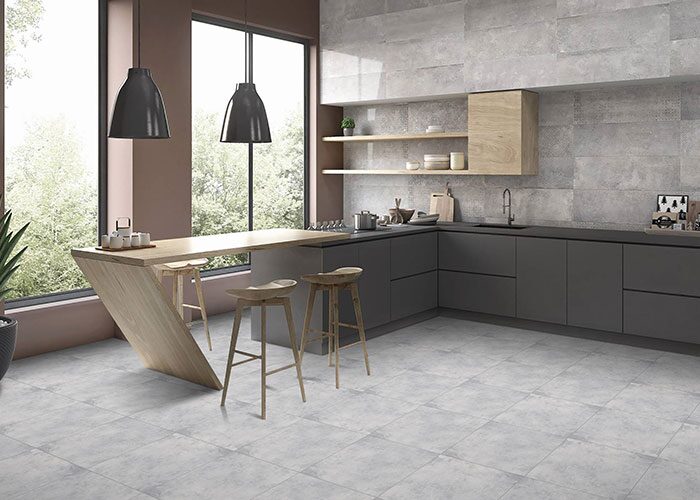The hardware for your cabinet plays an important role in its functionality and aesthetics. Cabinet hardware, such as knobs, pulls and hinges can greatly enhance the overall look of your cabinets while also providing ease of use.
However, like any other components of items in your home, cabinet hardware requires regular maintenance to ensure its longevity. This article will look at some essential tips and strategies for maintaining your cabinet hardware.
Table of Contents
Cleaning and care: Routine maintenance practices
Following routine maintenance practices is important for preserving the beauty and functionality of cabinet hardware.
Regularly clean hardware using a gentle, non-abrasive cleaner suitable for the specific material. Avoid abrasive scrubbers or harsh chemicals, as they can cause damage. Wipe down handles and knobs with a soft cloth to remove dirt and fingerprints.
You should regularly inspect the hardware for any signs of wear or damage, such as chipping or rusting. Promptly address any issues to prevent further deterioration. Lubricate hinges and moving parts with a silicone-based lubricant to ensure smooth operation, and tighten any loose screws or fittings to maintain stability.
Choosing the Right Hardware Materials
Selecting the right hardware materials is important for durability and longevity. Consider factors like the environment (kitchen, bathroom, etc.), and the style of the cabinets. Stainless steel and brass are excellent choices for kitchens due to their resistance to moisture and corrosion. For a more rustic look, iron or bronze hardware can add character.
When choosing materials, you should also consider finishes. Polished, brushed, or antiqued finishes can complement different design aesthetics. Ensure that the chosen materials and finishes are compatible with the cabinet material to prevent any reactions that could damage the material.
Proper installation techniques for durability
It’s important to do the installation properly to ensure the durability of the cabinet hardware. Ensure that holes are drilled precisely and aligned correctly. Use a template or jig to guarantee consistent placement. Avoid overtightening screws, as this can cause stress on the hardware, potentially leading to cracks or warping.
If you’re unsure about the installation process, consider seeking professional help. A skilled installer can ensure that the hardware is securely in place, maximizing its longevity.
Preventing wear and tear: Strategies for preservation
Preventing wear and tear helps preserve the lifespan of cabinet hardware. Avoid using excessive force when opening or closing cabinets, as this can strain hinges and handles. Close cabinet doors gently to prevent unnecessary stress on the hardware.
Use felt or rubber bumpers on cabinet doors and drawers to cushion the impact when closing. This simple addition can significantly reduce wear over time. Regular cleaning and maintenance routines also play an important role in preventing premature wear.
Handling repairs and replacements
In the event of damage or wear, addressing repairs promptly is essential. Tightening or touch-up paint may suffice for minor issues like loose screws or small chips. However, for more significant damage or if hardware is beyond repair, consider replacing it with new, high-quality pieces.
Accordingly, when replacing hardware, ensure that new pieces are compatible in size and style. Keep any part of the hardware that is left from the original installation for easy matching. This ensures the replacement goes smoothly and you’re able to maintain the overall aesthetic of your cabinets.
Customization and style update
When customizing or updating cabinet hardware, you have the opportunity to not only enhance aesthetics, but also improve functionality.
Choose handles and knobs that look appealing and feel comfortable to grip. Opt for ergonomic designs that facilitate easy opening and closing of cabinets. Consider features like soft-close mechanisms for a quieter and more controlled closing action.
Don’t overlook the importance of high-quality materials for your customized hardware. Opt for durable metals or finishes that can withstand daily use without tarnishing or deteriorating. This ensures that your updated hardware not only looks fantastic, but also stands the test of time.
Consulting with experts: Professional maintenance advice
When in doubt about anything regarding your cabinet hardware, seek advice from professionals. Professionals in this area can provide valuable insights on maintenance practices and product recommendations.
They can offer guidance on specific materials and finishes that suit your cabinets and environment. Their experience and knowledge can be especially beneficial when dealing with unique or specialty hardware needs.
Professionals can also assist with installation and repairs, ensuring that the hardware is properly handled for longevity. Whether you’re looking to upgrade your cabinet hardware or address issues with existing hardware, their expertise can make a significant difference.
The insights and recommendations they provide can help you make informed decisions about maintaining or handling your cabinet, ultimately contributing to their long-term durability and aesthetic appeal.
Final Thoughts
By following the tips shared above, you can ensure the longevity and optimal condition of your cabinet hardware. Regular cleaning, proper installation and preventive measures can go a long way in preserving the beauty and functionality of your cabinets.
Remember to consult with professionals when needed and don’t be afraid to update your hardware to keep up with your style preferences. With proper care and maintenance, you can rely on the hardware for your cabinets to remain in good shape for as long as possible.





